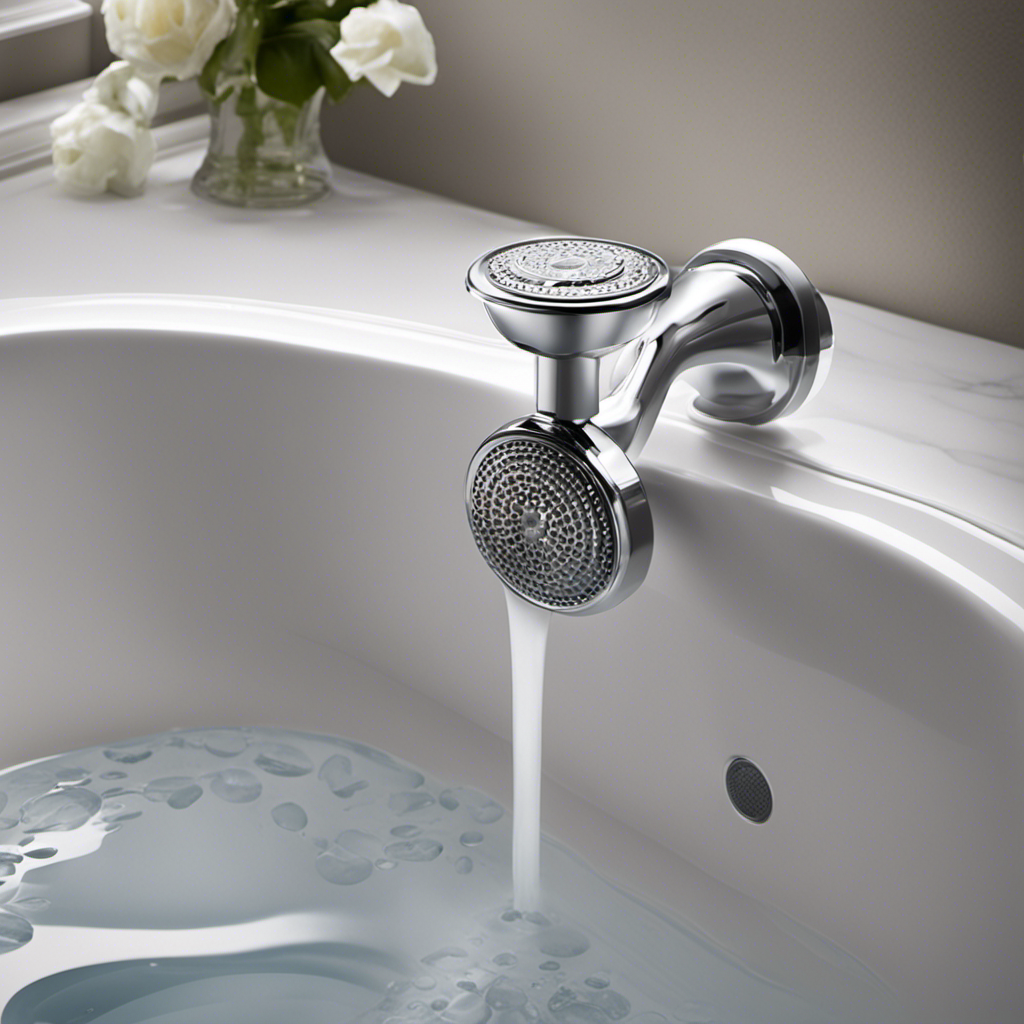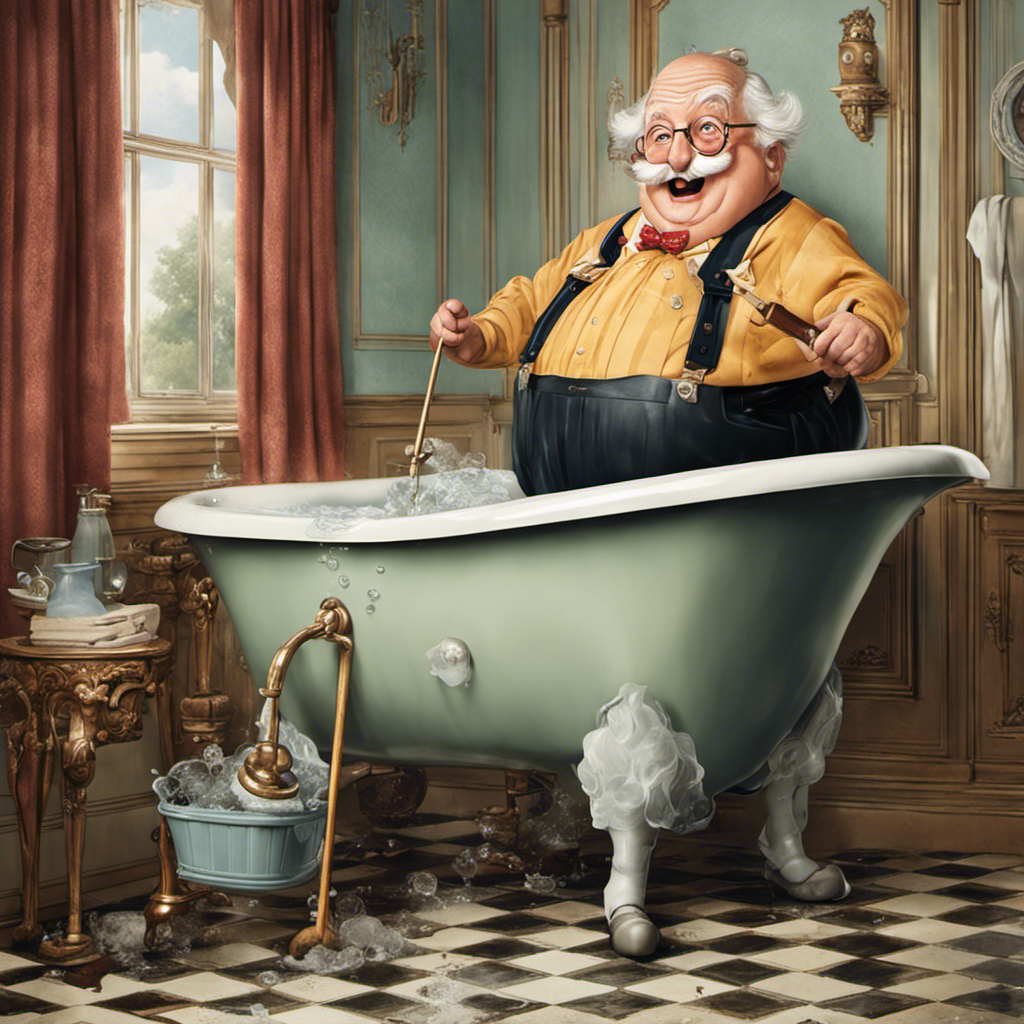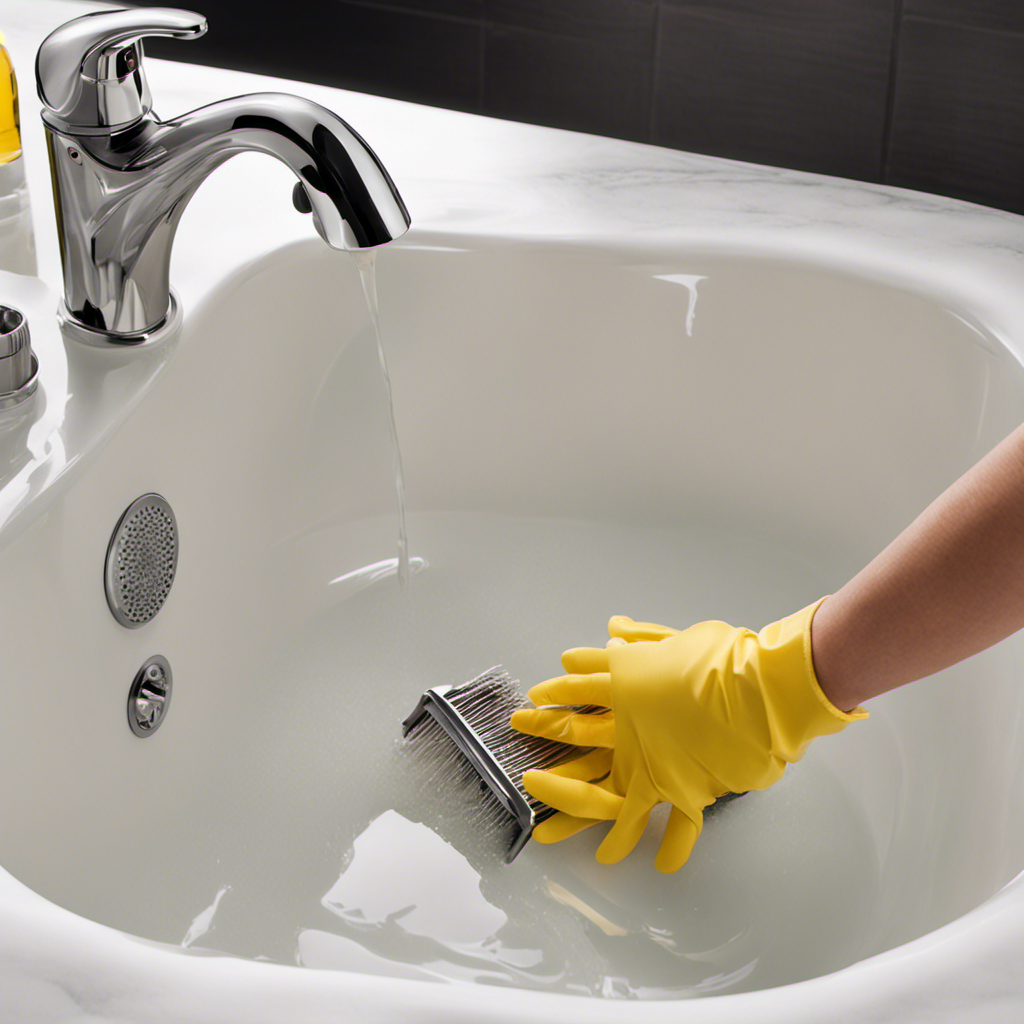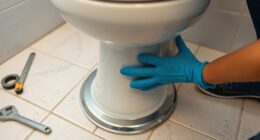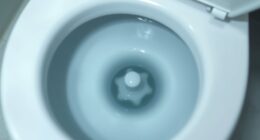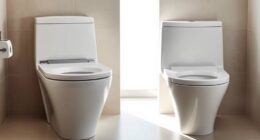Are you ready to tackle the task of connecting your bathtub drain?
In this step-by-step guide, we will show you how to seamlessly connect your drain using simple tools and materials.
By following our precise instructions, you will be able to remove the existing drain, install the new one, and connect it to the P-Trap with ease.
Get ready to say goodbye to any drainage problems and enjoy a perfectly functioning bathtub.
Let’s dive in!
Key Takeaways
- Removing the existing drain requires unscrewing the drain cover and using a drain removal tool or pliers to loosen and remove the drain.
- When installing a new drain, make sure you have the correct type for your bathtub and create a watertight seal using plumber’s putty or silicone caulk.
- Connect the drain to the P-trap by aligning the openings, sliding on the compression nut and rubber gasket, and ensuring a snug fit.
- After installation, test the drain for leaks, proper alignment, and functionality by pouring water down the tub and checking for any issues.
Tools and Materials Required
To connect a bathtub drain, you’ll need a few tools and materials. The bathtub drain installation process is crucial for ensuring proper water drainage and preventing any leaks or blockages. The importance of a proper drain connection in a bathtub cannot be overstated.
To start the installation process, gather the following items: a drain assembly, plumbers putty, a wrench, and a hacksaw. Begin by applying plumbers putty to the bottom of the drain assembly and insert it into the drain hole. Tighten the drain assembly with a wrench until it is secure. Use a hacksaw to trim the excess pipe if necessary.
Remember to test the drain by running water and checking for any leaks. Following these steps will help you successfully connect a bathtub drain.
Removing the Existing Drain
First, you’ll need to unscrew the drain cover using a screwdriver.
Drain removal techniques may vary depending on the type of drain you have, but the most common method involves removing the drain cover to access the drain assembly.
Start by inserting the screwdriver into the slots on the drain cover and turning it counterclockwise to loosen the screws.
Once the screws are loose, remove the drain cover and set it aside.
With the drain cover removed, you can now see the drain assembly below.
To remove the bathtub drain, use a drain removal tool or pliers to grip the crossbars or flanges of the drain and turn it counterclockwise.
Be careful not to damage the bathtub surface in the process.
Common issues when removing a bathtub drain include rusted or corroded parts, which may require extra effort to loosen.
If you encounter resistance, applying penetrating oil to the threads can help loosen the drain.
Installing the New Drain
Once you have removed the old drain assembly, it’s time to install the new one. Before you begin, make sure you have the right type of drain for your bathtub. There are different types of bathtub drains, such as a toe-touch drain, a lift-and-turn drain, and a trip lever drain. Each type requires a different installation method, so be sure to consult the manufacturer’s instructions.
When installing the new drain, it is crucial to use proper sealing techniques to prevent leaks. Apply plumber’s putty or silicone caulk to create a watertight seal between the drain and the tub. Tighten the drain assembly securely using a wrench, but be careful not to overtighten, as this can damage the drain or the tub.
Connecting the Drain to the P-Trap
After removing the old drain assembly, it’s important to ensure a secure connection between the P-trap and the new drain. Proper alignment and securing the connection are crucial to prevent leaks and maintain the integrity of the plumbing system.
To achieve this, follow these steps:
- Place the P-trap under the drain outlet, aligning the openings.
- Slide the compression nut onto the drain pipe, followed by the rubber gasket.
- Insert the drain pipe into the P-trap, making sure it fits snugly.
- Slide the compression nut up to the P-trap and tighten it securely.
- Check for any gaps or misalignments, and make necessary adjustments.
- Test the connection by running water through the drain and inspecting for leaks.
Testing and Troubleshooting
To ensure a reliable plumbing system, it’s important to test the connection between the P-trap and the new drain for any leaks or misalignments. This step is crucial in preventing future issues and maintaining the functionality of your bathtub drain.
Here are some common issues that you may encounter during testing and their recommended solutions:
-
Leaks: Check for any water leakage around the connection points. If you notice any leaks, tighten the connections or replace faulty components.
-
Misalignments: Ensure that the P-trap and drain are properly aligned. If there is any misalignment, adjust the fittings or use couplings to create a secure connection.
-
Blockages: Test the drain by pouring water down the tub. If there are any blockages, use a plunger or a drain snake to clear them.
-
Odor: If you detect a foul smell, it may indicate a problem with the P-trap. Remove and clean the trap to eliminate any trapped debris or bacteria.
Frequently Asked Questions
What Is the Average Cost of Hiring a Professional Plumber to Connect a Bathtub Drain?
The average cost of hiring a professional plumber to connect a bathtub drain can vary depending on factors such as location and complexity of the job. Consider the pros and cons of DIY installation before making a decision.
How Long Does It Typically Take to Complete the Bathtub Drain Installation Process?
You want to know how long it takes to install a bathtub drain? Well, it all depends on your skill level and the specific challenges you encounter. Troubleshooting and choosing the right drain are crucial steps in the process.
Can I Use a Different Type of Drain Than the One Recommended in the Article?
Yes, you can use a different type of drain than the one recommended in the article. There are alternative drain options available that may work for your bathtub installation.
Are There Any Specific Safety Precautions to Keep in Mind While Connecting the Bathtub Drain?
When connecting a bathtub drain, it is important to take safety precautions. Avoid common mistakes like improper sealing or using incompatible materials. Make sure to have the necessary tools and materials on hand for a successful installation.
What Should I Do if I Encounter Any Leaks After Completing the Installation Process?
If you encounter leaks after installing the bathtub drain, first check the connections for any loose or damaged parts. Tighten them if necessary. Common mistakes to avoid include using improper sealants and not properly aligning the drain components.
Conclusion
Now that you’ve successfully connected your bathtub drain, you can enjoy a relaxing soak without any worries.
By following the steps outlined in this guide, you were able to remove the old drain, install a new one, and connect it to the P-trap.
Remember to test the drain for any leaks and troubleshoot if necessary.
With these skills under your belt, you’re now a master of bathtub drain connections, ready to tackle any plumbing project that comes your way.
So go ahead and take the plunge!
